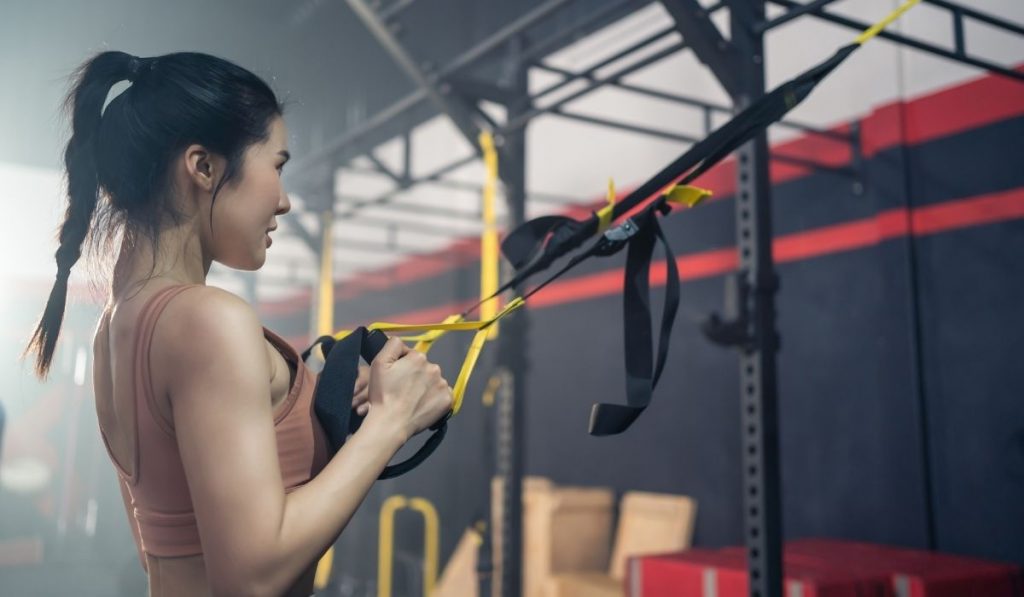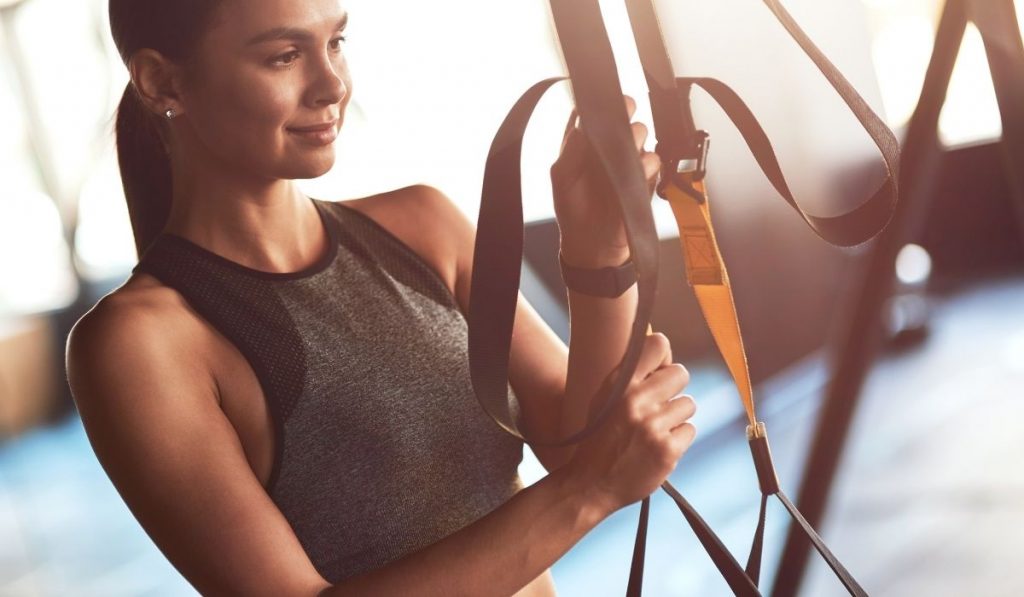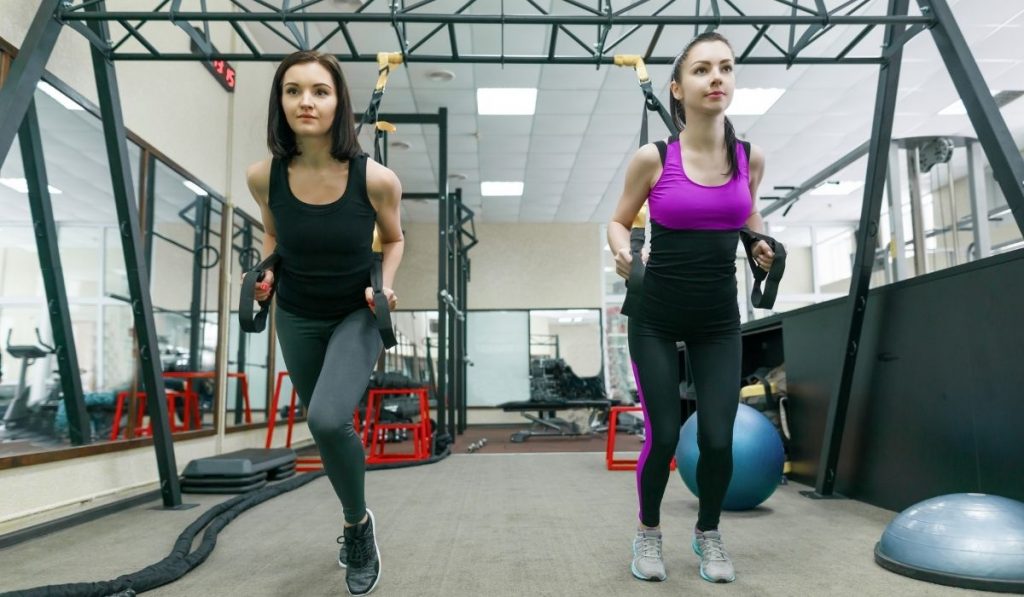Do you ever get nervous when you’re lifting weights with smooth, metal handles, knowing your palms are getting sweaty, and you feel the weights slipping and sliding around in your hands?
This fact may result in you discarding your workout early, setting down the weights, and wiping your hands on your gym shorts, hoping to get rid of that sweat so you can continue. It works for about a minute, and then you get the same sensation over again.
What could have been an intense, continuous weight-training session has become a frustrating, periodic attempt to finish your routine before your time is up and you have to go forward with the rest of your day.
Or maybe it’s not sweaty hands that get in the way with your practice. Maybe you’re struggling with your grip strength. You’re new to lifting weights and you haven’t developed any, or you’re trying to lift an especially heavyweight and your grip isn’t quite trustworthy enough for you to fully attempt lifting that barbell.
It’s frustrating because you’re purposefully working on that weight to get stronger, but you can’t lift it because you aren’t strong enough yet! It’s a vicious cycle and you’re not sure what to do.
As you walk out of the gym, feeling dissatisfied with today’s workout, you wonder if there’s a way to solve this problem of yours, your mind racing with possibilities from gloves to chalk to buying your own, sweaty-hand-friendly weights.
We’ve got a solution for you, which holds infinite possibilities for your workouts even as a Sweaty-Hander or a Grip Strength Greenie! It’s not gloves or chalk, and you don’t need to invest in your own, specially made weights. They’re called lifting straps, and they’re perfect to solve either and all gripping problems!
Well, what are these contraptions, tell me more! You’ll have to read on to find out. Keep going to the next section to learn what lifting straps are, how to use them, and what they can be used for!

Table of Contents
What Are These So-Called Lifting Straps?
Lifting straps are aids specifically designed to keep your grip on barbells when lifting during resistance training. They also can be called deadlift straps, weight lifting straps, or wrist straps, so maybe you’ve heard them mentioned before and just didn’t know what they were.
They are made of sturdy, durable fabric with a loop on one end and a trail of fabric on the other.
To use the lifting straps, you simply slide your hand through the loop, making sure it is resting on the wrist. Take the leftover fabric tail and wrap it around the handle of a barbell. Grab the tail with the same hand that has the loop around its wrist.
The lifting strap should be secured around your wrist and the barbell so that when you are gripping the strap, the barbell is connected to you. Lift the barbell as usual, but instead of gripping that slippery handle, you’re gripping the firm and textured strap. This should alleviate any grip issues and overcome problems with holding onto a barbell handle effectively.
And there you go, that’s how to use it!
People may believe that lifting straps are not natural for the workout, and will yield unwanted results, or not hit the muscle groups you’re hoping for. However, if you look at the way they’re used, they hit those muscle groups perfectly.
Lifting straps are secured on your person at the wrist, which employs the arms specifically to be able to lift all the way.
In fact, lifting straps may help alleviate any back injury, as you are more likely to overuse your back when lifting with your hands than with your wrists.
And, as lifting straps are around your wrists, they will strengthen the wrist and give you some of the grip strength needed to pick weights up with your bare hands in the future.
How to Know if Lifting Straps Are Right for You
Do you find that your grip tires before your muscles do? If you notice when at the gym that you feel you are capable of doing more reps, maybe even ten or twenty more based on your arm strength, but your grip strength will not allow it, then lifting straps are right for you.
They were designed to help you be able to continue to lift when your muscles can do more, but your grip can’t.
Lifting straps are initially designed for barbells but can be used for other weight-lifting activities as well.
They’re designed for pulling activities such as rack pulls, deadlifts, barbell rows, bent-over rows, lat pulldowns, and shrugs.
The only requirement is that the activity needs to involve gravity holding the straps at full extension. Whether hanging and pulling upwards, or the weights hanging down and you pulling them up, they need to be one or the other.
If you are switching, they will swing around and can hit you and injure you because there is some space and lack of control using straps instead of your own hands.
The Different Types of Lifting Straps
There are multiple different options for lifting straps you can decide between. None are really any more beneficial than the other.
In general, it all depends on your specific preferences, the specific workouts you are doing, and what makes your workout the most fulfilling.
There are three main versions: figure eight, closed-loop, and lasso strap.
The first type of lifting strap is the figure eight. This strap, as the name says, has two closed loops and loops around your wrist, around the bar, and around your wrist again.

This is the strap that gives you the most grip and is used for the longest and most intense workouts where you may not trust your grip strength over that length of time. There is no strap for your hands to grip, putting all the grip on the strap and your wrist, and deploying the muscles of your arms to lift.
However, the thing to keep in mind is that this strap doesn’t allow you to drop the weight, like the ones where you are gripping the strap in your hands.
So, if you try to drop the weight, you’ll come down with it. It’s best to use these with the massive weights when deadlifting or shrugging, but they should be used with caution so you don’t throw out your back.
The next strap, and the middle ground, is the lasso strap. This is the typical strap you would see, and that I described above.
It has the loop for your wrist on one end, and a long tail coming off that you can wrap around the barbell handle and hold in your same hand. This is probably the best for typical workouts unlike the specific ones for figure eight and Olympic straps, and for being able to release and drop weights if need be.
Closed-loop straps, or Olympic straps, are the hardest to grip. These are the best for Olympic lifts. These are also the easiest to drop if the exercise calls for it or need be, so that is great to keep in mind if you often lift and ditch the barbell.
Olympic straps have your wrist looped into a closed circle on one end, and a short tail of fabric on the other. This is wrapped around the barbell’s handle and closed back into the palm of your hand. This version, as the tail is so short, often results in you gripping the handle as well. By releasing your grip, you can easily drop this strap and the barbell.

Can They Be Used on Pull-up Bars as Well as Barbells?
Lifting straps are perfect for pullups! Especially if you find that your grip is frustratingly slipping off the bars when you’ve only done two or three pull-ups.
It’s not that your muscles are not developed enough to do more than that, your grip strength just prohibits it. Using lifting straps will ensure that you can go for as long as possible until you’ve hit the muscle groups you were aiming for in the way that you intended, instead of a curtailed and unfulfilling workout.
To correctly use lifting straps on the pullup bars, you’ll want to use a lasso strap or an Olympic strap (though it will most likely not serve you in terms of helping grip) The figure-eight may get you stuck to the bar, so keep that in mind!
Loop your wrist through the strap, so that the tail is touching your palm. Then, wrap the tail around the pullup bar and keep it in your hand as you grip the bar. This will largely help so you do not have to rely on your grip.
Though it’s not a permanent fix, just one to help you get started until your muscles are strong enough to do it on their own!
